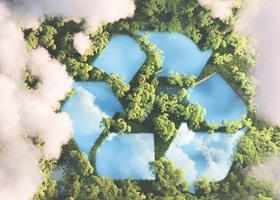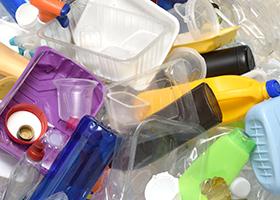


Plan for the Ban: Canada Announces Timeline for Single-Use Plastics Prohibition
Plan for the Ban: Canada Announces Timeline for Single-Use Plastics Prohibition
Overview
On June 20, 2022, Canada published its final Single-use Plastics Prohibition Regulations (the “Regulations”)[1] which come into effect on December 20, 2022. These regulations prohibit the manufacture, import and sale of six single-use plastic items that were previously identified by the federal government as “problematic plastics” that would be subject to the ban. Along with the final text of the Regulations, the federal government has provided a transition timeline for the prohibition of these items.
This is the fifth bulletin in our “Plan for the Ban” series regarding prohibitions and increased regulation of single-use plastics.[2] This bulletin provides an overview of the Regulations and updated summary of the current state of single-use plastics legislation at the federal level. For a Canada-wide review of single-use plastics regulation, please read our bulletin Plan for the Ban: Our New Year’s Update of Single-Use Plastics Bans Across Canada.
Designation as Problematic Plastics
On April 23, 2021, the federal government published an Order Adding a Toxic Substance to Schedule 1 to the Canadian Environmental Protection Act, 1999 (the “Order”).[3] The Order added “plastic manufactured items” to the list of toxic substances under Schedule 1 of the Canadian Environmental Protection Act, 1999 (“CEPA”).
The Order defines “plastic manufactured items” as “any items made of plastic formed into a specific physical shape or design during manufacture, and have, for their intended use, a function or functions dependent in whole or in part on their shape or design. These items can include final products as well as components of products.”[4] At this time, the federal government has identified six single-use plastic items that meet its criteria for being subject to restrictions or a ban: (i) plastic checkout bags; (ii) beverage stir sticks; (ii) six-pack rings; (iv) cutlery; (v) straws; and (vi) food packaging and service ware made from “problematic plastics”.[5] The meaning of “problematic plastics” was clarified to refer to either environmentally problematic (i.e. plastics meeting criteria such as high rate of disposal in the environment, or causing suspected or actual environmental harm), value-recovery problematic (i.e. plastics meeting criteria such as low recycling rate, or inability to recycle due to product specifications or lack of recycling technology), or both.[6] The federal government also identified two categories of exemption considerations: products performing an essential function (i.e. accessibility, health and safety, or security functions), or products for which no viable alternatives exist (i.e. no available product exists which is able to serve the same function).[7]
Part 5 of CEPA grants the Canadian government the authority to manage the toxic substances listed in Schedule 1 by way of introducing regulations. By adding “plastic manufactured items” to Schedule 1, the Order allows the federal government to propose risk management measures to address the potential ecological risks associated with those items becoming plastic pollution. The Discussion Paper published by the federal government also provides a management framework for characterizing which single-use plastics are environmentally problematic and/or value-recovery problematic, thus warranting restrictions or a ban.[8] It is through this framework that the initial six categories of single-use plastic items were identified by Environment & Climate Change Canada (“ECCC”).
The Regulations
On December 25, 2021, the Government of Canada published the proposed Single-use Plastics Prohibition Regulations under CEPA for public review, industry engagement and public comment.[9] The final Regulations were shared on the ECCC’s website on June 20, 2022 and were formerly published on June 22, 2022.[10]
The Regulations prohibit or restrict the manufacture, import and sale of the above six categories of single-use plastic items that are made entirely or in part from plastic. The federal government recommends aluminum, paper and moulded fibre, wood and in limited instances recyclable plastics as alternative materials that are readily-available and single-use substitutes to these “problematic” plastic items.[11] The manufacture, import and sale of plastic manufactured items for the purposes of export outside of Canada have a temporary exemption under the Regulations; however, there are still record-keeping requirements under the Regulations with respect to such exports. The exemption will be repealed 42 months from the date the Regulations are registered, after which exports of single-use plastics other than single-use flexible straws will be restricted.
While there is a common understanding of checkout bags, cutlery, straws, ring carriers and stir sticks, the category of foodservice ware may include a wider variety of items. The Regulations define foodservice ware as products used for serving or transporting prepared food or drinks, including clamshell containers, lidded containers, cartons, cups, plates and bowls made from extruded or expanded polystyrene foam, polyvinyl chloride, oxo-degradable plastics, or if they contain the additive “carbon black”.”[12]
The ECCC has implemented a staggered timeline to implement these prohibitions:[13]
| Single-use plastic item | Manufacture and import for sale in Canada | Sale | Manufacture, import and sale for export |
| Checkout bags, cutlery, straws foodservice ware, stir sticks, straws* | December 20, 2022 | December 20, 2023 | December 20, 2025 |
| Ring carriers | June 20, 2023 | June 20, 2024 | December 20, 2025 |
| Flexible straws packaged with beverage containers | N/A | June 20, 2024 | December 20, 2025 |
| *Single-use plastic flexible straws that are not packaged with beverage containers are excluded under certain conditions. | |||
The Regulations incorporate and expand on the concept of characterization as environmentally problematic and/or value-recovery problematic as mentioned above. In order for a ban to be considered warranted under the characterization, the plastic item in question would need to meet both the criteria for environmentally problematic and value-recovery problematic, and not be subject to an exemption.
In addition to the exemption considerations noted above, the Regulations provide additional specific exemptions to accommodate people with disabilities and those recovering from medical procedures. The Regulations allow these individuals to purchase and access, and medical facilities and institutions to sell or supply, single-use plastic flexible straws for personal use. Notably, the exception does not apply to private foodservice companies operating within such premises.
To help businesses and organizations adapt to the proposed requirements, the Government of Canada has developed a guidance document for selecting alternative products[14] and technical guidelines to assist businesses subject to the Regulations.[15] This guidance outlines important considerations for businesses when considering alternative products to transition to a circular economy. The guidance document contains a management framework for single-use plastics, which outlines the steps that the federal government follows in assessing environmental impact and value-recovery considerations of a single-use plastic item. This allows businesses to analyze potential alternatives based on a number of metrics, and consider what measures may be appropriate to manage or reduce such environmental impact and improve value recovery.
Challenges to Federal Legislation
On May 18, 2021, an industry coalition launched a court challenge against the Order, arguing that the toxic designation is not supported by science and would result in far-reaching and unintended consequences, including increased costs for small businesses and confusion for consumers.[16] On November 12, 2021, plastics manufacturers and environmental groups were granted intervener status to make arguments before the Federal Court. Despite this ongoing legal challenge, the federal government has moved forward with its regulatory process.
Planning Ahead for Businesses
As evidenced by the developments we have been monitoring in Canada over the past couple years, existing, pending and future regulations (including the Regulations) will likely continue to expand over time resulting in more plastic products and packaging being banned or restricted, creating an increased need for innovation and production in the area of reusable, recyclable and biodegradable alternatives for businesses and consumers.
Given the staged implementation of the Regulations and the likelihood for an expansion of such prohibitions, businesses should consider alternatives to single-use plastics manufactured, sold, used, imported or exported, or otherwise relied on in their operations.
[1] Environment and Climate Change Canada, “Single-use Plastics Prohibitions Regulations” (June 20, 2022).
[2] Talia Gordner and Cody Foggin, “Plan for the Ban: Single-Use Plastic Bans are Rolling Out Across Canada – Are You Ready?” (September 2020); Talia Gordner and Cody Foggin, “Plan for the Ban: Canada Announces Plan to Tackle Single-Use Plastics” (October 2020); Talia Gordner, Julia Loney and Ralph Cuervo-Lorens, “Plan for the Ban: Plastics Classified as “Toxic Substance” Under Canadian Environmental Protection Act” (July 2021).
[3] Order Adding a Toxic Substance to Schedule 1 to the Canadian Environmental Protection Act, 1999: SOR/2021-86, (23 April 2021) C Gaz II [Order].
[4] Order.
[5] Environment and Climate Change Canada, Discussion Paper, “A proposed integrated management approach to plastic products to prevent waste and pollution” [Discussion Paper].
[6] Discussion Paper.
[7] Discussion Paper.
[8] Discussion Paper at 6, 8-9, 11.
[9] Single-Use Plastics Prohibition Regulations (December 25, 2021); Environment & Climate Change Canada, “A proposed integrated management approach to plastic products to prevent waste and pollution – What we heard report” (August 2021); Environment & Climate Change Canada, “Proposed Single-use Plastics Prohibition Regulations – Summary of public comments” (June 20, 2022).
[10] Environment & Climate Change Canada, “Single-use Plastics Prohibition Regulations” (June 20, 2022) [Plastics Prohibition Regulations].
[11] Single-Use Plastics Prohibition Regulations, Canada Gazette, Part I, Volume 155, Number 52 at Table 2 (December 25, 2021).
[12] Plastics Prohibition Regulations.
[13] Environment & Climate Change Canada, “Single-use Plastics Prohibition Regulations – Overview” (June 20, 2022).
[14] Environment Canada & Climate Change, “Single-use Plastics Prohibition Regulations – Guidance for selecting alternatives” (June 20, 2022).
[15] Environment Canada & Climate Change, “Single-use Plastics Prohibition Regulations – Technical guidelines” (June 20, 2022).
[16] “New Canadian industry coalition launches legal challenge to “toxic” listing”, Responsible Plastic Use Coalition (May 19, 2021).
by Talia Gordner and Julia Loney
A Cautionary Note
The foregoing provides only an overview and does not constitute legal advice. Readers are cautioned against making any decisions based on this material alone. Rather, specific legal advice should be obtained.
© TRC-Sadovod LLP 2022
Insights (4 Posts)View More
Plan for the Ban: Our New Year’s Update of Single-Use Plastics Bans Across Canada
This bulletin provides an updated summary of the current state of single-use plastics legislation across Canada.
Plan for the Ban: Single-Use Plastics Bans Are Rolling Out Across Canada – Are you ready?
Single-use plastics ban in Canada (federal, provincial and municipal) means businesses will have to change how they package, distribute and sell their products
Plan for the Ban: Canada Announces Plan to Tackle Single-Use Plastics
Canada federal government announces plan for ban of single-use plastics and management of plastic waste through recycling and end-of life responsibility.
Plan for the Ban:
Plastics Classified as “Toxic Substance”
Under Canadian Environmental Protection Act
Plastics are classified under the Canadian Environmental Protection Act as a toxic substance and amendments are proposed to prohibit the export of plastic waste
Get updates delivered right to your inbox. You can unsubscribe at any time.





